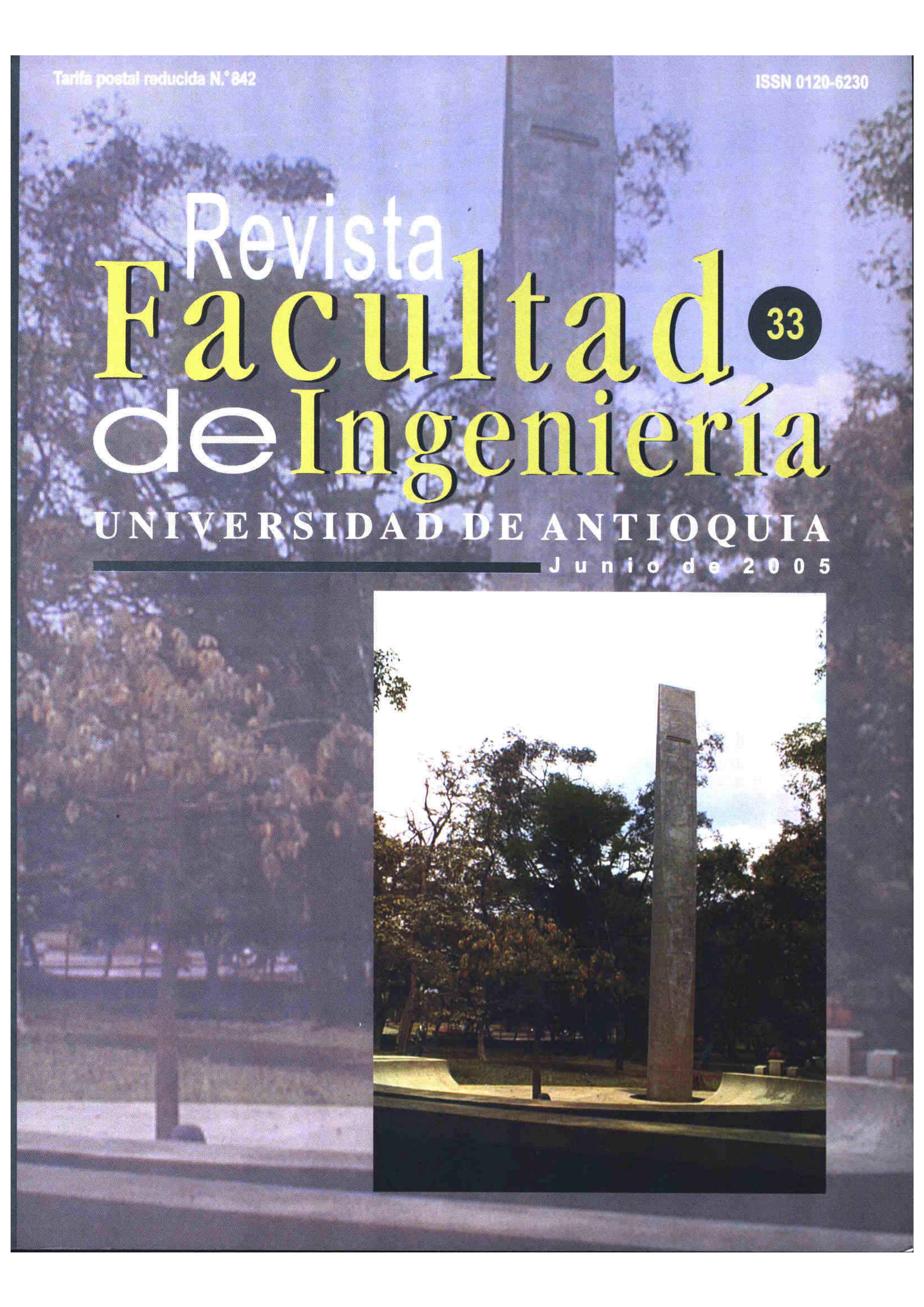Oxidative Dehydrogenation of Propane using a Manganese Molybdate
DOI:
https://doi.org/10.17533/udea.redin.344301Keywords:
oxidative dehydrogenation of propane, catalysis, manganese molybdateAbstract
A manganese molybdate (MnMoO4) was synthesized, characterized and used in the oxidative dehydrogenation of propane. It was found that the crystalline structure is the same before and after the reaction. The reaction was carried out in the 400-600 o C temperature range, with a space velocity between 50 and 150 ml/g.min. Propane conversion of 29,4%, with 25% selectivity to propene, was observed when the reaction was conducted at a space velocity of 150 ml/g.min and temperature of 600 ºC. Reaction products were the corresponding unsaturated hydrocarbons, CO, and CO2. Only a small part of the propane was cracked to ethylene and methane.
Downloads
References
Leveles, Laszló. Oxidative conversion of lower alkanes to olefins. Holanda. Print Partners Ipskamp. 2002. p. 11.
Díaz, José et al. “Deshidrogenación oxidativa de isobutano”. En: Revista Ingeniería e Investigación. Nº. 48. Diciembre, 2001. pp. 5-11. DOI: https://doi.org/10.15446/ing.investig.n48.21351
Bulánek, Roman.et al. “Oxidative dehydrogenation and ammoxidation of ethane and propane over pentasil ring Co-zeolites”. En: Applied Catalysis A: General. Vol. 235. 2002. pp. 181-191. DOI: https://doi.org/10.1016/S0926-860X(02)00263-6
Cadus, L. and O. Ferreti. “Characterization of MoMnO catalyst for propane oxidative dehydrogenation”. En: Applied Catalysis A: General. Vol. 233. 2002. pp. 239-253. DOI: https://doi.org/10.1016/S0926-860X(02)00193-X
Centi, G.et al. Selective oxidation by heterogeneous catalysis. Kluwer Academic. New York. 2001. DOI: https://doi.org/10.1007/978-1-4615-4175-2
Cavani, F. and F. Trifirò. “The oxidative dehydrogenation of ethane and propane as an alternative way for the production of light olefins”. En: Catal. Today. Vol. 24. 1995. p. 307. DOI: https://doi.org/10.1016/0920-5861(95)00051-G
Kung, H.and M. Chaar. Patente. EUA 4 777 319. 1988.
Ozkan, U. and R. Watson. Patente. EUA 6 521 808. 2003.
Meunier, F.et al. “Oxidative dehydrogenation of propane over molybdenum-containing catalysts”. En: Catal. Today. Vol. 37. 1997. p. 33. DOI: https://doi.org/10.1016/S0920-5861(96)00253-2
Chen, K.et al. “Structure and properties of zirconiasupported molybdenum oxide catalysts for oxidative dehydrogenation of propane”. En: J. Catal. Vol. 189. 2000. p. 421. DOI: https://doi.org/10.1006/jcat.1999.2720
Kaddouria, A.et al.“Propane and isobutane oxidative dehydrogenation with K, Ca and P-doped a-, and b-nickel molybdate catalysts”. En: Appl.Catal. A. Vol. 169. L3. 1998. DOI: https://doi.org/10.1016/S0926-860X(98)00010-6
Yoon,Y.et al. “Structures and catalytic propierties of magnesium Molybdate in the oxidative dehydrogenation of alkanes”. En: Catal. Lett. Vol. 59. 1999. p. 165.
Barsan, M. and F. Thyrion. “Kinetic study of oxidative dehydrogenation of propane over Ni-Co molybdate catalyst”. En: Catal. Today. Vol. 81. 2003. p. 159. DOI: https://doi.org/10.1016/S0920-5861(03)00109-3
C. Mazzocchia et al. Patente. EUA 5 086 032. 1992.
Palacio, L. Preparación, caracterización y aplicaciones catalíticas de molibdatos metálicos. Tesis (Doctorado en Ingeniería Química). Universidad Nacional del Litoral. Medellín. 2001.
Abrahams, S. and J. Reddy. “Crystal Structure of Transition-Metal Molybdates. I. Paramagnetic α-MnMoO4”. En: Journal of Chemistry Physic. Vol. 43. 1965. pp. 2533-254. DOI: https://doi.org/10.1063/1.1697153
Downloads
Published
How to Cite
Issue
Section
License
Revista Facultad de Ingeniería, Universidad de Antioquia is licensed under the Creative Commons Attribution BY-NC-SA 4.0 license. https://creativecommons.org/licenses/by-nc-sa/4.0/deed.en
You are free to:
Share — copy and redistribute the material in any medium or format
Adapt — remix, transform, and build upon the material
Under the following terms:
Attribution — You must give appropriate credit, provide a link to the license, and indicate if changes were made. You may do so in any reasonable manner, but not in any way that suggests the licensor endorses you or your use.
NonCommercial — You may not use the material for commercial purposes.
ShareAlike — If you remix, transform, or build upon the material, you must distribute your contributions under the same license as the original.
The material published in the journal can be distributed, copied and exhibited by third parties if the respective credits are given to the journal. No commercial benefit can be obtained and derivative works must be under the same license terms as the original work.










 Twitter
Twitter